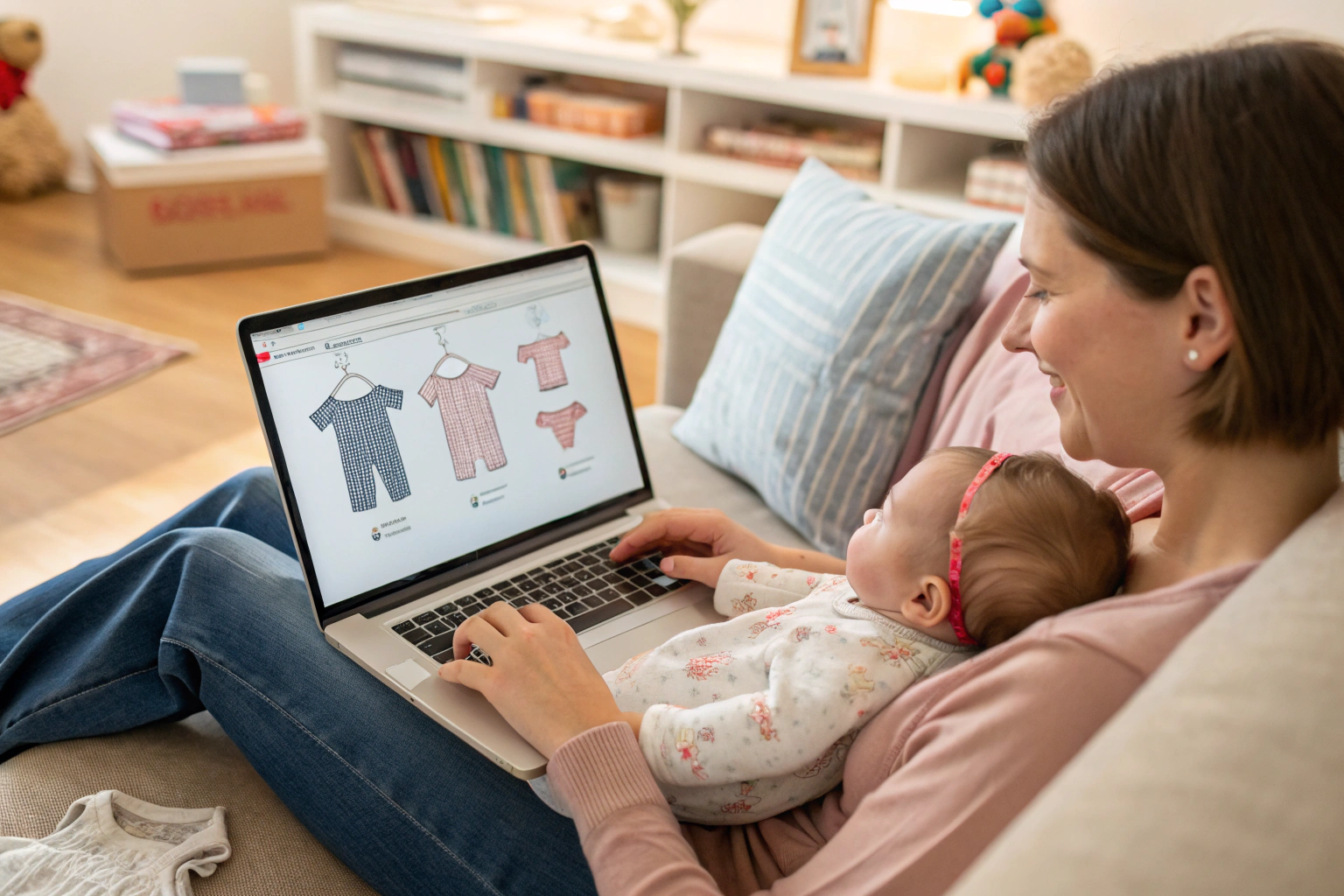When buying baby clothes—whether as a parent, brand owner, or boutique retailer—people often have a checklist in mind. It’s not just about colors or styles. We think about how safe, soft, and functional each item is for a baby’s daily routine.
When shopping for baby clothes, most people prioritize fabric softness, safety, size accuracy, practicality, and style. Brand trust and delivery speed are also important, especially for new parents or retailers preparing for seasonal launches.
In this article, I’ll break down what buyers like Ron—and end consumers—care about most when selecting baby garments, and how we at Fumao Clothing design our production system to meet those expectations.
Why is fabric quality the top concern in babywear?
The first thing most buyers check when shopping for baby clothes is the material. Parents want clothing that feels soft against delicate skin, doesn’t shrink or pill in the wash, and holds its shape after repeated use.
At Fumao, we prioritize high-grade cotton, bamboo blends, and interlock knits that pass international comfort and stretch tests. These materials feel good, breathe well, and handle drool, crawling, and daily washes. We also make sure every lot is tested for formaldehyde, azo dyes, and heavy metals.
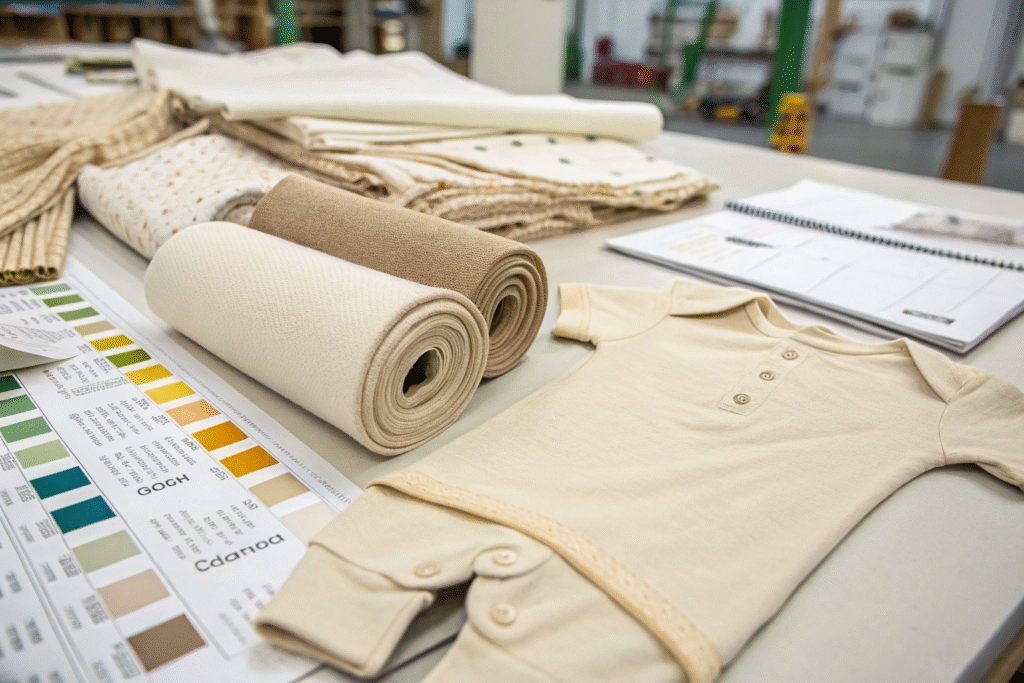
What are the safest fabrics for baby clothes?
Organic cotton and bamboo viscose top the list. They’re hypoallergenic, breathable, and GOTS-certified options guarantee eco-friendliness. At our facility, we test each batch for chemical residues in certified labs like SGS.
Parents care about safety labels and product transparency. That’s why we include OEKO-TEX® tags on every piece. We also provide lab reports to B2B buyers so they can build trust with their customers through certification-backed marketing.
How do fabrics affect long-term customer satisfaction?
Soft fabric creates repeat buyers. Many retailers report that complaints often come from rough seams or shrinkage after the first wash. That’s why we pre-shrink fabrics and use flatlock seams where possible.
Sites like Hanna Andersson and Mori show how emphasizing fabric quality becomes a brand story. We’ve helped several clients reposition themselves as "gentlewear" brands using our organic interlock knits.
How important is size and fit when buying baby clothes?
Fit matters more than many think. Babies grow fast, and sizing that runs too small or too large can ruin a customer’s experience. Parents are often shopping ahead—buying 3–6M clothes for a newborn or sizing up for growth.
We’ve standardized our babywear sizing across regions and offer size guides for both US and EU standards. Our clients get access to our graded spec sheets and even video tutorials showing how each size fits on mannequins. It saves retailers tons of returns and frustration.
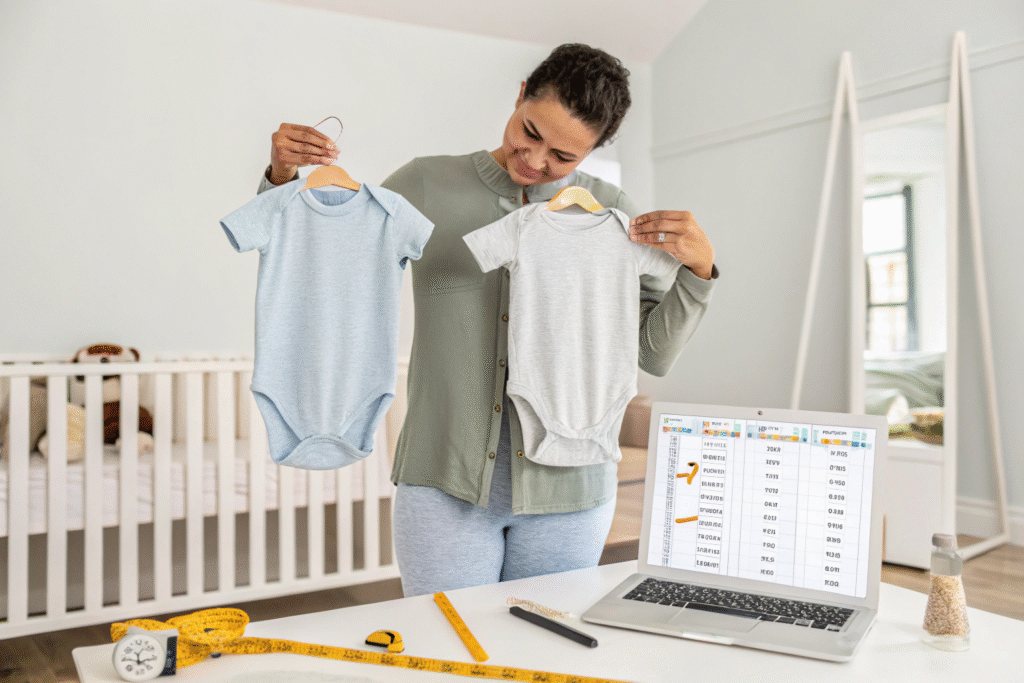
What do most buyers expect from a babywear size guide?
Clarity. Measurements in both cm and inches. A fit note (e.g., “runs large”) and weight/height estimates per age group. Sites like Carter’s do this well—they combine visuals and written info in one place.
At Fumao, we design our tech packs with flexible armholes and envelope necklines to help garments last longer. We also offer extended fit options like “slim fit” or “chubby cut” to meet niche requests.
Can poor sizing hurt a brand’s reputation?
Yes. Sizing issues are one of the top reasons for babywear returns. If your brand becomes known for “inconsistent sizes,” you’ll lose trust. We help retailers eliminate this issue by providing pre-production samples, size tags with QR-linked fit charts, and digital try-on visuals using Clo3D.
Buyers who take sizing seriously see fewer returns and higher customer loyalty. It’s one of the smartest areas to invest in when scaling a babywear line.
What role does practicality play in purchase decisions?
Style may catch the eye, but ease-of-use closes the sale. Parents look for details like crotch snaps, envelope necklines, and wide leg openings. Features that save time during diaper changes or reduce fuss during dressing make a huge difference.
As a factory, we build practicality into our patterns—everything from fold-over mitts to tear-away care labels. These micro-designs drive repeat purchases, especially for items like rompers, footies, and sleep sacks.
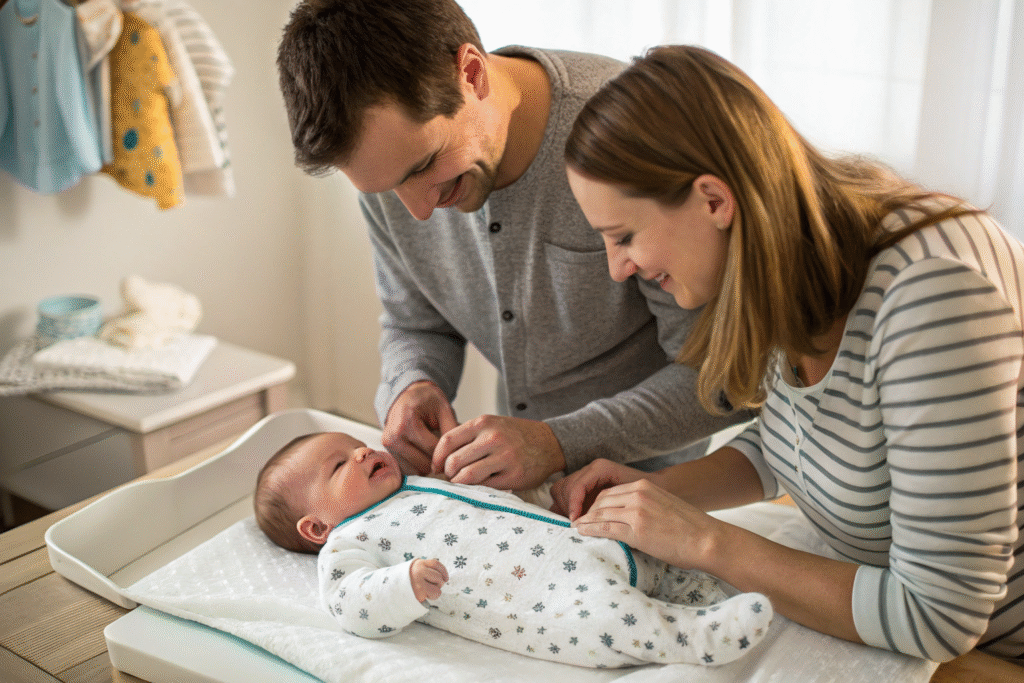
What are the most useful features in babywear?
Based on years of feedback, here are key features:
- Two-way zippers for faster changes
- Hidden snaps for safety
- Fold-over cuffs for warmth and scratch prevention
- Machine washable with no color fade
We take inspiration from top brands like Kyte Baby and Little Sleepies, whose product pages highlight function just as much as aesthetics. Our design team tests closures, trims, and elastic recovery to ensure lasting usability.
Do parents care about easy care instructions?
Absolutely. Many won’t buy if something requires special washing or hand care. We use heat-set labels and easy-to-read tags with symbols. Our packaging also includes washing cards, which help reduce customer service inquiries.
According to Consumer Reports, over 60% of parents prefer low-maintenance clothing. It’s part of why we recommend cotton-spandex blends—they dry quickly, hold shape, and resist wrinkling.
How do aesthetics and trendiness influence babywear shopping?
Design matters more than ever. Parents today are style-savvy. They want outfits that look good in photos, coordinate with family sets, and match their home’s color palette. Social media plays a big role in shaping buying habits.
At Fumao, we offer trend forecasts, digital moodboards, and influencer-approved palettes each season. Our clients use these to create cohesive collections with visual storytelling.
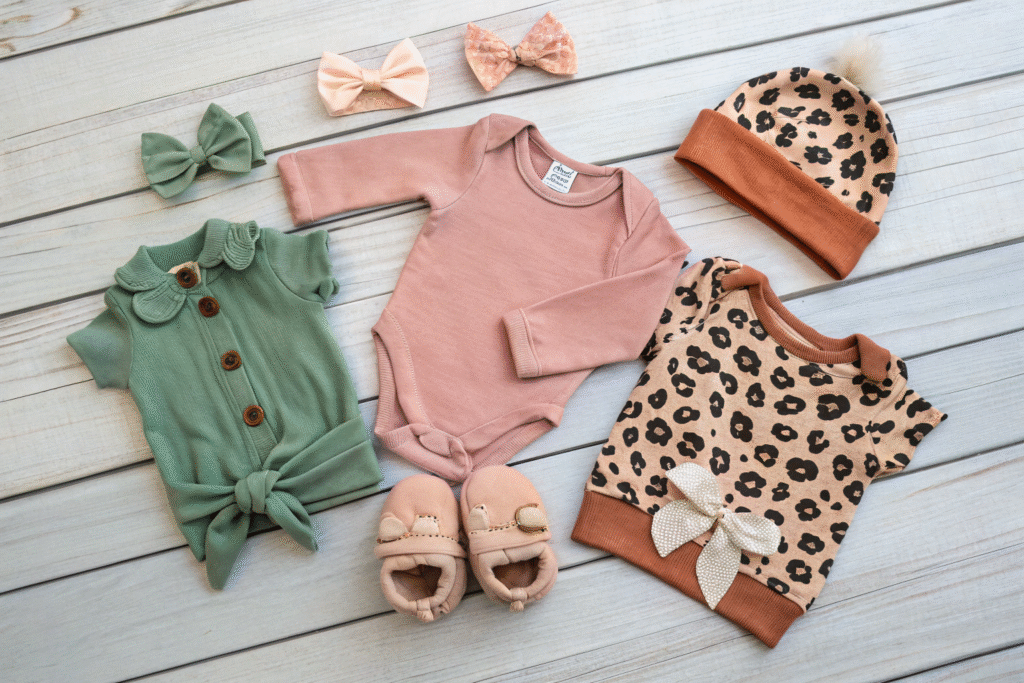
What styles are trending in baby clothing now?
Neutral tones, earthy colors, minimalist prints, and vintage florals are hot. Gender-neutral collections sell well too. Animal motifs like foxes, whales, and safari sets also perform year-round.
Brands like Loulou Lollipop and Pehr lead with these trends. We help clients stay on trend with fabric sourcing, swatch approval, and in-house embroidery design.
How can retailers balance cuteness with originality?
Originality doesn’t mean complicated. We suggest using exclusive prints, layered textures, or contrast piping to stand out. Offering seasonal drops or capsule bundles also adds freshness.
We’ve helped clients build signature elements like elbow patches or scalloped trims that became brand markers. Pair this with storytelling—why this print matters, what the color represents—and you’ve got a deeper connection with shoppers.
Conclusion
When people shop for baby clothes, they care about softness, safety, fit, functionality, and beauty. These aren’t just consumer preferences—they’re trust signals. And in the fast-moving world of baby fashion, meeting those needs consistently means winning repeat business.
At Fumao Clothing, we build every garment with this mindset. From lab-tested fabrics to practical patterns and trend-aware designs, we help babywear retailers deliver what their customers truly want.
Let’s create baby clothes that feel good, work well, and look even better—together.

